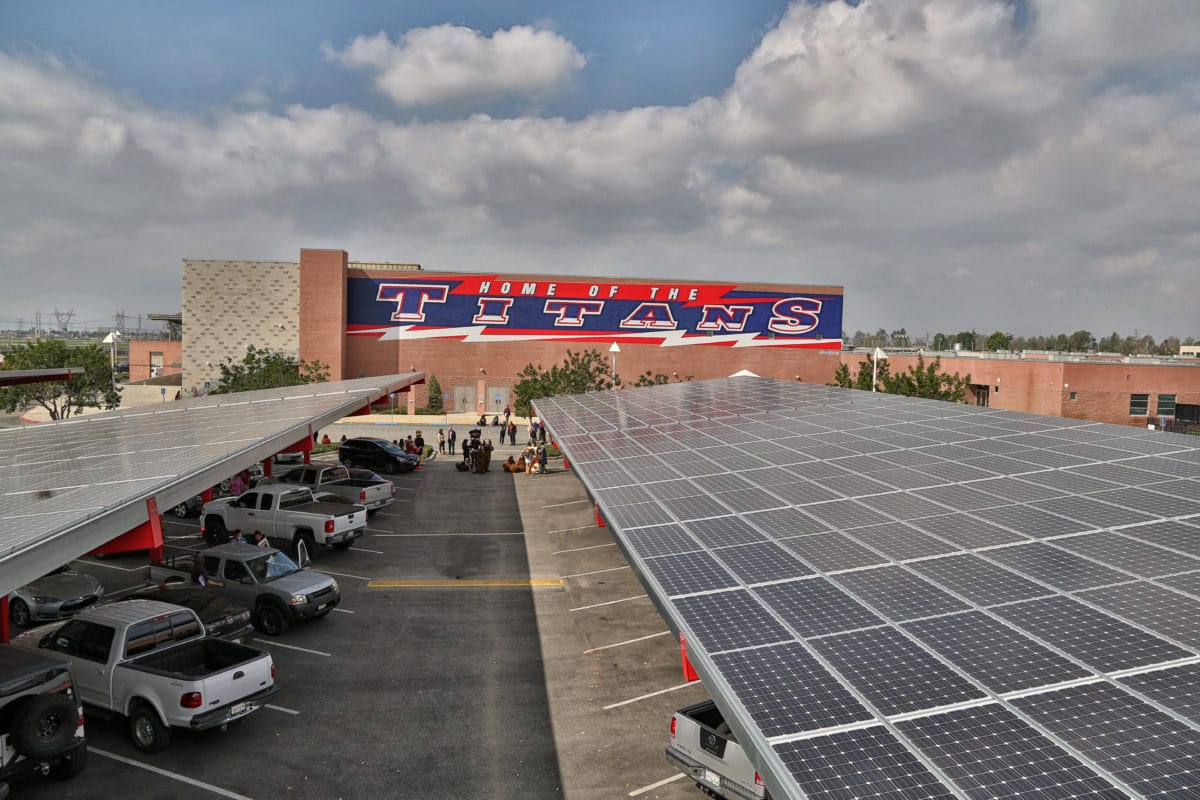Total installed solar capacity on U.S. schools has increased 139% since 2014, according to the 2020 Brighter Future report, released by Generation180, a non-profit that advocates for campuses to gain more access to solar power.
While the capacity of solar installed at schools is up, so to is the total number of schools with solar installations, rising 81% since 2014. As of 2020, 7,332 schools nationwide have solar systems accounting for 1,337 MW of capacity.
Solar schools now make up 5.5% of all public and private K-12 schools, almost doubling from 3% in 2014. The decision to go solar at public schools is typically made at the district level, and 16% of K-12 school districts, 2,231 in total, have embraced PV.
According to the report, the average school solar installation size is 182 kW.
As with most things solar, California led the way on schools’ solar adoption, as 2,430 schools have deployed 616 MW of solar. More than 2 million California schoolchildren attend a solar school.
Next comes New Jersey with 621 schools, 181 MW, and 407,751 students. After that each respective category has some variation, with Illinois (455 schools), Arizona (400) and Massachusetts (292) rounding out the top-5 for solar schools; Arizona (125 MW), Massachusetts (71 MW), and Indiana (41 MW) taking the top-5 for installed MW; and Florida (302,699), Illinois (271,990), and Arizona (270,233) having the third-most, fourth-most, and fifth-most, respectively, students attending solar schools.
The report also highlighted the shortcomings of North Carolina, as the state has third-most installed solar solar capacity (7,000 MW), but comes in at 31st nationally for solar schools. Only 57 schools in North Carolina have solar energy systems installed on campus, according to the report.
Virginia jumped from 20th place to 8th place nationwide between 2017 and 2020, driven primarily by the legalization of power purchase agreements in Dominion’s service area. This change enabled the number of schools with solar on them to grow from 29 to 89 in two years, as the installed capacity expanded 10-fold, from 1.9 MW to more than 20 MW.
Similar growth will not be able to be replicated in North Carolina, as PPAs are not yet allowed anywhere in North Carolina. Even so, the state began a solar leasing program in 2017, which allows for a service agreement that offers some of the same benefits, including solar on campus at no upfront cost.
The full report and additional media are available here.
This content is protected by copyright and may not be reused. If you want to cooperate with us and would like to reuse some of our content, please contact: editors@pv-magazine.com.









By submitting this form you agree to pv magazine using your data for the purposes of publishing your comment.
Your personal data will only be disclosed or otherwise transmitted to third parties for the purposes of spam filtering or if this is necessary for technical maintenance of the website. Any other transfer to third parties will not take place unless this is justified on the basis of applicable data protection regulations or if pv magazine is legally obliged to do so.
You may revoke this consent at any time with effect for the future, in which case your personal data will be deleted immediately. Otherwise, your data will be deleted if pv magazine has processed your request or the purpose of data storage is fulfilled.
Further information on data privacy can be found in our Data Protection Policy.